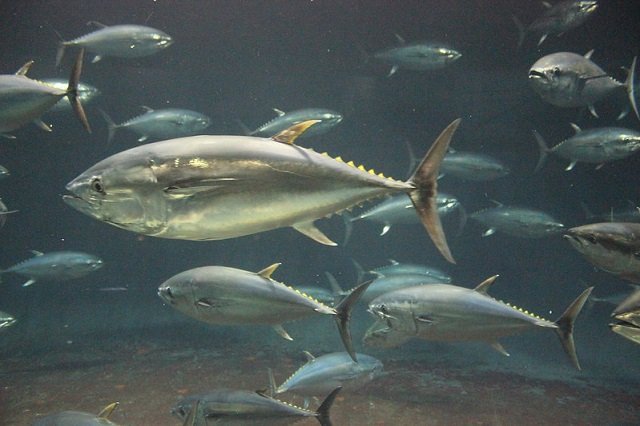Microplastics are emerging contaminants that have scientists worldwide concerned about their potential negative impacts on animal health and ecosystems.
Evidence of microplastic ingestion in marine biota has been extensively documented in various taxa, including zooplankton, natural and wild fish, gastropods, sea cucumbers, and crustaceans.
Researchers from Atlantic Technological University and Cartron Point Shellfish Ltd studied the effectiveness of microplastic depuration in two commercially important oyster species.
They investigated the presence, concentrations, and composition of microplastic polymers in two cultured oysters: Pacific oyster (Magallana gigas or Crassostrea gigas) and European flat oyster (Ostrea edulis).
Shellfish depuration
According to FAO, purification is the process by which “shellfish are held in tanks of clean seawater under conditions that maximize natural filtration activity, resulting in the expulsion of intestinal contents, improving the removal of contaminants from shellfish, and preventing recontamination.”
Purification is a common post-harvest practice in shellfish aquaculture to minimize contamination risks (e.g., coliforms). However, experimental purification treatments conducted in Europe have shown to reduce microplastic concentrations in the soft tissues of oysters.
Retention time and purification efficiency are species-specific and depend on various factors such as microplastic size, shape, surface properties, and the duration of purification.
Depuration efficacy in reducing microplastic abundance
“The microplastic concentrations per individual after 96 h of purification were reduced by 76.7% in M. gigas and 92.7% in O. edulis,” they report.
In this regard, purification treatments had a significant effect on microplastic abundance in Pacific oysters and European flat oysters.
Stay Always Informed
Join our communities to instantly receive the most important news, reports, and analysis from the aquaculture industry.
“In both oyster species, a slight increase in microplastic concentration was observed at 24 and 72 h of purification treatments. This unexpected observation could be related to a short acclimation period in the laboratory,” they indicated.
Furthermore, they highlight that the observations show that O. edulis may require a more extended purification period to reduce microplastic concentrations compared to M. gigas due to the structure of its digestive system.
On the other hand, the researchers indicate that their study demonstrates that the current depuration period (42 h) as a minimum threshold for the removal of biotoxins and coliforms may not be sufficient for optimal elimination of accumulated microplastics in cultured oysters in Ireland.
Recommendations for the industry
Considering the data presented in the study, scientists highlight key points to emphasize:
- The laboratory assay is based on other similar research conducted in Europe. Despite being a laboratory study, it can be expanded to a commercially scaled purification system.
- Microplastic concentrations should be evaluated at the sites where oysters are produced.
On the other hand, scientists emphasize that due to the lack of guidelines and regulations for assessing microplastics in aquaculture products, a valuable and appropriate option could be the creation/establishment of a standard based on best practices to ensure that microplastics are not present in aquaculture bivalves.
Conclusion
“To our knowledge, this is the first study investigating the efficiency of microplastic depuration in cultured oysters in Ireland. Microplastic concentrations in their edible tissues can decrease significantly with increased purification time (over 72 h),” they conclude.
They also highlight that a purification period of at least 96 h can remove over 90% of microplastics.
Finally, the study provides a valuable baseline for industry decision-makers and policymakers. However, an assessment at an industrial scale is needed to obtain better results.
The study was funded by the AquaVitae project of the European Union Horizon 2020 and the JPI Oceans MicroplastiX project.
Contact
Ann Tracy Paul
Marine & Freshwater Research Centre
Atlantic Technological University
Dublin Road, H91 T8NW, Galway, Ireland.
Email: anntracypaul@gmail.com
Reference (open access)
Paul, A. T., Hannon, C., Švonja, M., Connellan, I., & Frias, J. (2023). Efficacy of microplastic depuration on two commercial oyster species from the west coast of Ireland. Journal of the World Aquaculture Society, 1– 18. https://doi.org/10.1111/jwas.12989
Editor at the digital magazine AquaHoy. He holds a degree in Aquaculture Biology from the National University of Santa (UNS) and a Master’s degree in Science and Innovation Management from the Polytechnic University of Valencia, with postgraduate diplomas in Business Innovation and Innovation Management. He possesses extensive experience in the aquaculture and fisheries sector, having led the Fisheries Innovation Unit of the National Program for Innovation in Fisheries and Aquaculture (PNIPA). He has served as a senior consultant in technology watch, an innovation project formulator and advisor, and a lecturer at UNS. He is a member of the Peruvian College of Biologists and was recognized by the World Aquaculture Society (WAS) in 2016 for his contribution to aquaculture.




